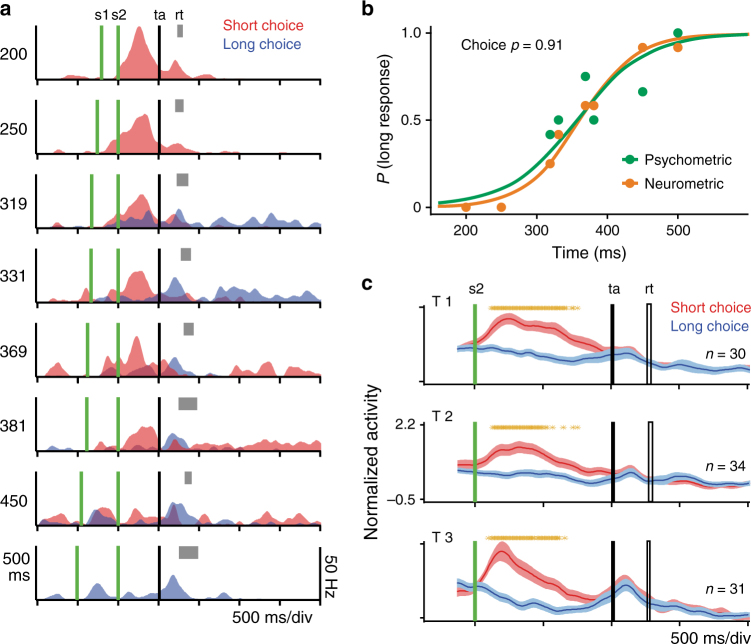Fig. 7.
Category-selective neurons. a Mean SDFs of a category-selective neuron of monkey 2 whose activity was modulated during the delay epoch by the future monkey’s categorical choice for short durations. The activity is segregated by the monkey’s choice (red: short, blue: long choice) and interval duration (indicated to the left of each graph). Same notation as in Fig. 2a. b Psychometric performance (green) of the monkey during the recording of the neuron in a, whose neurometric function is shown in orange. The choice probability of this cell was close to 1 and the χ2-test on the contingency table calculated between the decoded and the observed monkey’s choices across all trials was significant (x2 = 54.43; p < 0. 001). c Population activity (mean ± SEM) of neurons of monkey 1 whose firing rate is significantly higher for short response trials during the delay epoch (red function). Orange asterisks indicate: (1) t-test significant differences in ten millisecond, non-overlapping bins (over the population SDF, short vs. long choices, 95% bootstrap confidence interval, 100 iterations). The single cell (a) and the population activity (c) are aligned to the presentation of the second stimulus (s2)

